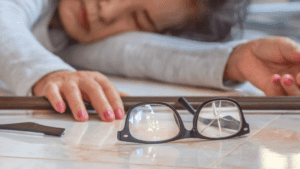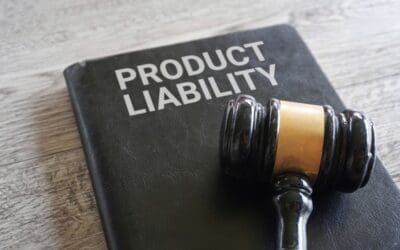Compensation Slip and Fall: How to Maximize Your Settlement
Understanding how settlements work is vital if you seek compensation for a slip and fall. Getting what you deserve is never as simple as adding up your medical bills; you need a robust claim covering every aspect of your loss, from immediate medical expenses to pain and suffering. This guide will walk you through essential steps to ensure your compensation slip and fall claim captures the full scope of your damages and maximizes your recovery.
Key Components of Compensation Slip and Fall Claims
Economic and Non-Economic Damages
To build a compelling compensation slip and fall case, you must include both economic and non-economic damages in your claim:
-
Economic damages: Medical bills, lost wages, ongoing care, prescriptions, adaptive equipment, and out-of-pocket payments.
-
Non-economic damages: Pain and suffering, emotional distress, reduced quality of life, and any psychological impact.
Properly separating and documenting these damages ensures a stronger settlement. Property owner liability, prompt action within the statute of limitations, and accurate documentation are also key factors.
The Role of Medical Expenses
Your medical costs set the foundation for all compensation slip and fall settlements. Record every relevant expenditure: hospital stays, physical therapy, prescription drugs, and future medical needs. Up-to-date medical documentation is your best evidence of the injury’s lasting effects.
Lost Wages and Future Earnings
Missing work after a slip and fall means loss beyond the immediate paycheck. Document all lost income, including salary, overtime, bonuses, benefits, and your projected career trajectory. Analyzing your future earning capacity can substantially increase your settlement amount.
Understanding Pain and Suffering Multipliers
Insurers use a multiplier (generally 1–5) to estimate non-economic damages in compensation slip and fall claims. Factors include the severity of your injury, long-term impairments, and disruption to daily living. Comprehensive records help justify a higher multiplier and a better settlement.
 Essential Documentation for Maximum Compensation
Essential Documentation for Maximum Compensation
-
Medical records: Every doctor’s visit, hospital stay, and therapy session
-
Financial evidence: Tax returns, pay stubs, receipts for out-of-pocket costs
-
Visual proof: Photos of the accident scene, injuries, hazardous conditions, and property damage
-
Witness statements: Signed accounts bolster your version of events
Legal Factors Influencing Compensation Slip and Fall Satisfaction
Settlement amounts are shaped by legal details, like establishing fault, site maintenance records, and expert witness testimony. Consult a legal professional familiar with compensation slip and fall cases to navigate the complexities and maximize your payout.
Additional Economic Factors to Consider
When calculating your compensation slip-and-fall settlement, be sure not to overlook indirect economic losses, which often go unrecognized but significantly affect your financial stability.
Future Medical Expenses
Injuries sustained in slip and fall accidents can require ongoing treatment, surgeries, or therapies well beyond your initial recovery period. Projected future medical costs should be factored into your claim. This includes potential hospital readmissions, prescription medication over the years, assistive devices, and home healthcare services.
Loss of Earning Capacity and Benefits
Sometimes the injury prevents you from returning to your former occupation or limits your employability in general. The loss of earning capacity extends beyond lost wages, including future promotions, bonuses, retirement benefits, and employer-sponsored perks like health insurance. Documenting your career trajectory before the accident with expert testimony can help quantify this loss effectively.
Impact on Household and Caregiving Responsibilities
Beyond financial costs, a compensation slip and fall settlement should consider the economic value of any unpaid caregiving or household duties you can no longer perform. If you’ve paid for services to replace your contributions at home, such as childcare, cleaning, or yard work, these expenses should be included in your claim.
The Importance of Timely and Accurate Documentation
One of the biggest challenges in slip and fall claims is compiling solid evidence before memories fade and details become murky.
Incident Scene Evidence
Photographing the hazardous property condition right after the accident is crucial, even if the property owner attempts to fix or clean the hazard afterwards. Take detailed photos of the slippery floor, broken steps, uneven sidewalks, or any other dangerous conditions.
Witness Collaboration
Witness statements can corroborate your account and help establish liability. Contact promptly anyone who saw the accident or the unsafe condition leading to it. Secure their contact information and, if possible, written statements.
Medical Documentation
Stay consistent with your medical appointments and treatments. Missed or delayed documentation can weaken your claim. Additionally, having your treating medical professionals explicitly state the connection between your injury and the accident in their reports adds authoritative weight to your slip-and-fall claim.
Personal Injury Logs
Create a daily journal describing your pain levels, emotional state, and how the injury limits your activities, this personalized account supplements medical records with a detailed narrative of your suffering.
Strategic Legal Support Enhances Your Claim
Navigating insurance company negotiations and understanding slip and fall law nuances can be overwhelming for those unfamiliar with personal injury claims. Partnering with an attorney experienced in compensation slip and fall cases offers numerous advantages:
-
Maximizing Compensation: Attorneys know how to calculate damages comprehensively and argue for fair multipliers.
-
Evidence Gathering: Legal teams help obtain property maintenance logs, surveillance footage, and expert testimonies.
-
Handling Insurance Tactics: Insurers often try to undervalue claims or dispute liability; a lawyer can negotiate assertively or pursue litigation if necessary.
-
Statute of Limitations: Attorneys ensure your claim is filed timely, preserving your right to compensation.
Practical Tips for Strengthening Your Compensation Slip and Fall Claim
-
Report the Incident Immediately: Notify the property owner or manager and file a formal accident report if available.
-
Seek Prompt Medical Attention: Quick diagnosis protects your health and strengthens your settlement position.
-
Conserve All Receipts: Track all costs related to the injury, including medical, transportation, assistive devices, and alternative treatments.
-
Maintain Clear Communication: Avoid casual statements about recovery timelines or fault, as these may be used against you later.
-
Avoid Settling Too Soon: Insurance companies may pressure you into early settlements; consult your attorney before signing any paperwork.
Take Action to Secure Your Compensation
Don’t leave your compensation slip and fall settlement to chance. Proper documentation, expert support, and legal guidance can make an enormous difference.
Ready to get the compensation you deserve? Contact Calandro Law today to discuss your case, and let our experienced team help you take the first step toward full financial recovery.

 Essential Documentation for Maximum Compensation
Essential Documentation for Maximum Compensation

